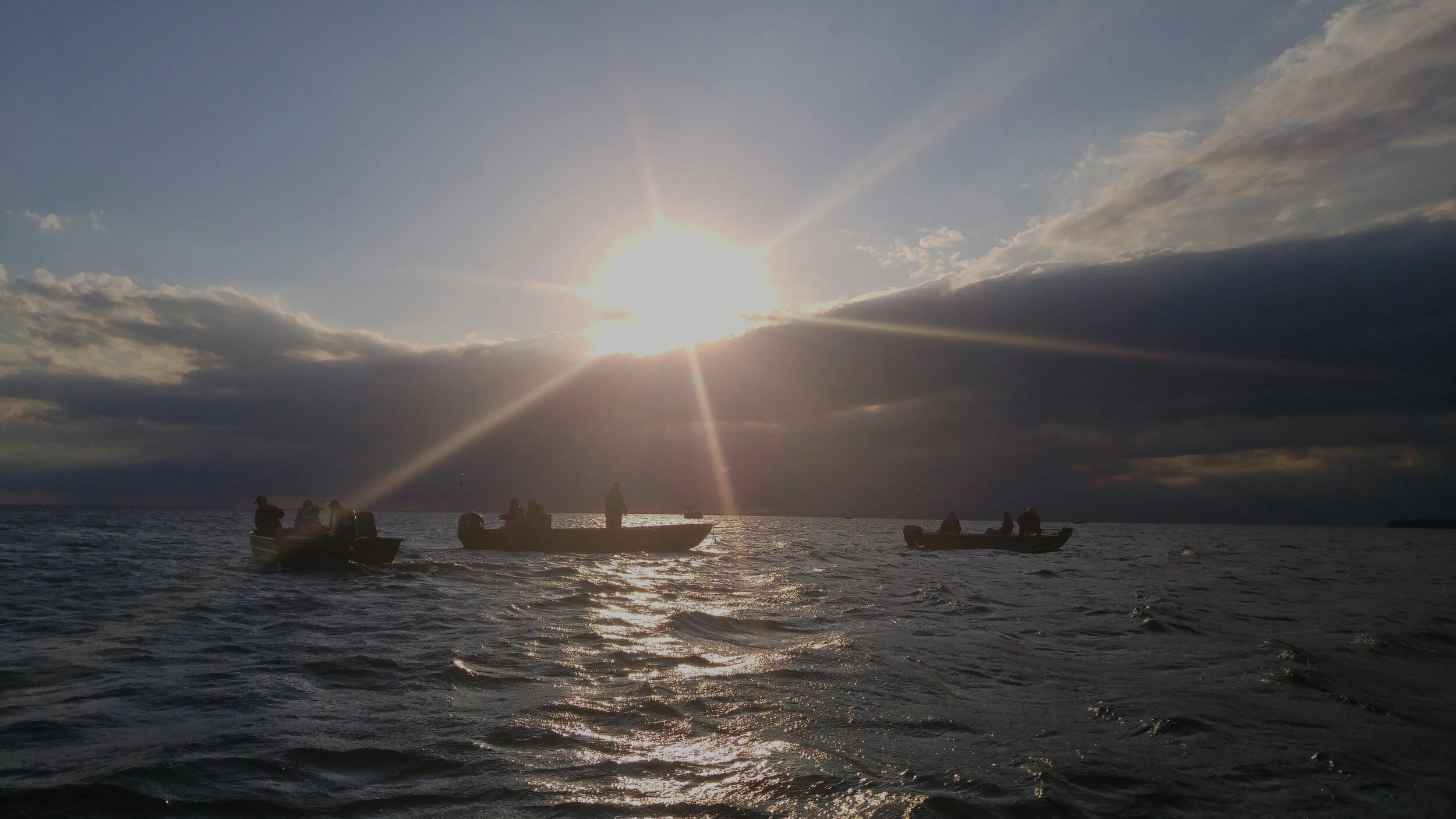
Walleye as a focal species
New Research
Walleye Fishery Bright Spots in a Changing Climate

Certain walleye populations have declined in locations where they once thrived, while other populations have increased despite facing similar stressors. Significant previous research on inland fishes has investigated the factors driving population declines. Yet far less research has focused on areas and populations responding positively. Focusing on ‘bright spots’ (where a population is performing better than expected) tends to highlight innovations, social context, and the potential for more effective fisheries management in the face of environmental change.
Our Objectives are to
Identify areas where walleye metrics are better than expected given environmental and habitat conditions (i.e. bright spots)
Through surveys and landscape models, determine actionable factors that are related to bright spots.
Water clarity, temperature, and walleye habitat
Understanding fish habitat to design sustainable management
Walleye prefer low water clarity and cool water temperatures. Water clarity and temperature combine to determine the amount of suitable walleye habitat in a lake, known as its thermal-optical habitat area. Work in Mille Lacs has related changes in thermal-optical habitat to walleye abundance and safe harvest. We are extending this work to other walleye lakes in Minnesota to understand how changes in temperature and clarity influence walleye across diverse lakes.
Walleye habitat status assessment to guide and prioritize management
Walleye are an important sport fish in Minnesota and are managed in over 1,400 lakes. Declining walleye populations in Midwestern lakes are a major concern, and multiple walleye lakes must be managed with limited resources. To improve walleye management are evaluating the status of walleye populations relative to their habitat potential, and the sensitivity of walleye habitat to changing water clarity and temperature.
Status: Lakes with abundant habitat generally produce the most walleye. Quantifying the status of a lake’s walleye habitat will help prioritize lakes for management based on their potential. Walleye population status relative to expectations based on habitat area can guide harvest policies – for example, regulations may be relaxed when abundance exceeds expectations, and restricted when abundance is lower than expected.
Sensitivity: Minnesota lakes are undergoing changes in water clarity and water temperature. The effect of these changes on walleye habitat will vary among lakes. Assessing the sensitivity of individual lakes to changes in water clarity and temperature will allow forward-looking management that focuses limited resources on the most resilient lakes that are least likely to be negatively affected by changing conditions.
Water clarity influences walleye safe harvest in Mille Lacs
Walleye in Mille Lacs and the safe operating space
Mille Lacs supports the most popular walleye fishery in Minnesota. Declining walleye populations over the past decade or more have resulted in highly restrictive harvest regulations and social, economic, and political turmoil. We related walleye declines to increased water clarity, and propose that decreasing safe harvest limits in response to declining habitat availability can keep this iconic ecosystem within the safe operating space of sustainable fisheries.



